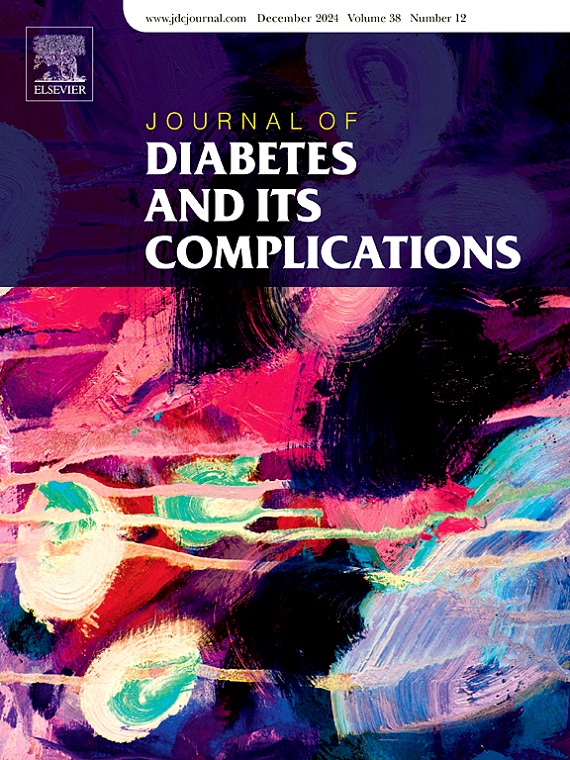非诺贝特在糖尿病视网膜病变中的应用:综述
IF 3.1
3区 医学
Q3 ENDOCRINOLOGY & METABOLISM
引用次数: 0
摘要
尽管在治疗方面取得了进展,但糖尿病视网膜病变(DR)仍是导致失明的主要原因,并且对低成本干预措施的需求仍未得到满足,以预防和减缓DR的进展。非诺贝特已显示出作为DR管理的有用辅助手段的前景,并在一些国家获准用于治疗DR。然而,支持使用非诺贝特治疗DR的数据来自FIELD、accord -脂质及其子研究ACCORD-EYE试验的辅助分析,这些试验主要用于评估心血管结局。最近结束的LENS试验旨在评估非诺贝特对DR进展的影响,在中期随访(即4-5年)中显示出明确的益处证据,并证实其对1型或2型糖尿病患者的安全性。这些益处似乎与非诺贝特的降脂作用无关,更有可能是通过其对眼睛的直接作用来调节的。在这篇关于非诺贝特治疗DR的叙述性综述中,我们总结了可能的作用机制、随机试验的现有证据以及对临床实践和研究的影响。本文章由计算机程序翻译,如有差异,请以英文原文为准。
The use of fenofibrate in diabetic retinopathy: Narrative review
Diabetic retinopathy (DR) is a leading cause of blindness despite advances in treatment and there remains an unmet need for low-cost interventions to prevent and slow the progression of DR. Fenofibrate has shown promise as a useful adjunct in DR management and is licensed for use in the treatment of DR in a few countries. However, the data supporting the use of fenofibrate for the treatment of DR emerged from subsidiary analyses of the FIELD, ACCORD-LIPID and its sub-study ACCORD-EYE trials, which were primarily designed to evaluate cardiovascular outcomes. The recently concluded LENS trial, designed to evaluate the effect of fenofibrate on progression of DR, has shown clear evidence of benefit over medium-term follow-up (i.e., 4–5 years), and confirmed its safety in people with type 1 or type 2 diabetes. These benefits appear to be independent of fenofibrate's lipid lowering effects and are more likely to be mediated via its direct effects on the eye. In this narrative review on the use of fenofibrate in the treatment of DR, we summarise the possible mechanisms of action, existing evidence from randomised trials, and implications for clinical practice and research.
求助全文
通过发布文献求助,成功后即可免费获取论文全文。
去求助
来源期刊

Journal of diabetes and its complications
医学-内分泌学与代谢
CiteScore
5.90
自引率
3.30%
发文量
153
审稿时长
16 days
期刊介绍:
Journal of Diabetes and Its Complications (JDC) is a journal for health care practitioners and researchers, that publishes original research about the pathogenesis, diagnosis and management of diabetes mellitus and its complications. JDC also publishes articles on physiological and molecular aspects of glucose homeostasis.
The primary purpose of JDC is to act as a source of information usable by diabetes practitioners and researchers to increase their knowledge about mechanisms of diabetes and complications development, and promote better management of people with diabetes who are at risk for those complications.
Manuscripts submitted to JDC can report any aspect of basic, translational or clinical research as well as epidemiology. Topics can range broadly from early prediabetes to late-stage complicated diabetes. Topics relevant to basic/translational reports include pancreatic islet dysfunction and insulin resistance, altered adipose tissue function in diabetes, altered neuronal control of glucose homeostasis and mechanisms of drug action. Topics relevant to diabetic complications include diabetic retinopathy, neuropathy and nephropathy; peripheral vascular disease and coronary heart disease; gastrointestinal disorders, renal failure and impotence; and hypertension and hyperlipidemia.
 求助内容:
求助内容: 应助结果提醒方式:
应助结果提醒方式:


